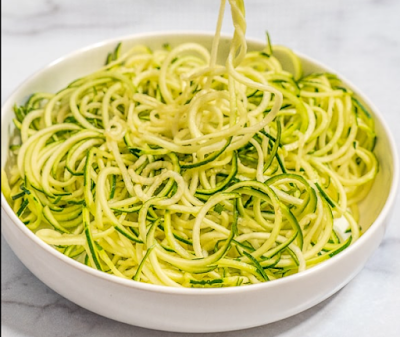How to Cook Zucchini Noodles Without Getting Soggy
Zucchini noodles, also known as zoodles, have become a popular substitute for traditional pasta due to their low-carb and gluten-free nature. However, one common problem with zucchini noodles is that they can become soggy and unappetizing when cooked. If you're looking for a way to cook zucchini noodles without getting soggy, you've come to the right place. In this article, we'll share some tips and tricks to help you achieve perfectly cooked zoodles every time.
Why Do Zucchini Noodles Get Soggy?
Zucchini noodles are made up of mostly water, which is why they can easily become soggy when cooked. Additionally, cooking them for too long or at too high a temperature can also contribute to their mushiness. To avoid this, it's important to follow some simple steps to ensure that your zucchini noodles turn out perfectly every time.
How to Cook Zucchini Noodles Without Getting Soggy
Here are some tips for cooking zucchini noodles without getting soggy:
1. Choose the Right Zucchini
It's important to choose firm and fresh zucchini when making zucchini noodles. Look for zucchini that is free of blemishes and has a bright, vibrant color. If your zucchini is starting to soften or has brown spots, it may be best to use it in a different recipe.
2. Use a Spiralizer
A spiralizer is a kitchen tool that can turn your zucchini into long, thin noodles. This tool allows you to create uniform noodles that will cook evenly and have a better texture. If you don't have a spiralizer, you can also use a julienne peeler or a mandoline to create zucchini noodles.
3. Salt the Zucchini
Salting your zucchini before cooking can help draw out some of the moisture and prevent it from becoming too soggy. Simply sprinkle some salt over the zucchini noodles and let them sit for 10-15 minutes. Then, use a paper towel to blot away any excess moisture before cooking.
4. Cook Quickly
Zucchini noodles should be cooked quickly to ensure that they don't become mushy. Heat a small amount of oil in a pan over medium-high heat and add your noodles. Cook for 2-3 minutes, stirring occasionally, until they are tender but still slightly firm. Be sure not to overcook them, as this can cause them to become too soft and mushy.
5. Serve Immediately
Zucchini noodles are best served immediately after cooking. If you need to keep them warm for a short period of time, place them in a bowl and cover with foil to keep them from drying out. However, for the best texture and flavor, it's recommended to serve them right away.
Pros and Cons of Zucchini Noodles
Like any food, zucchini noodles have their pros and cons. Here are some things to consider:
Pros
- Low in calories and carbs
- Gluten-free and paleo-friendly
- High in fiber and nutrients
- A good way to incorporate more vegetables into your diet
Cons
- Can become soggy when cooked
- May not be as satisfying as traditional pasta
- Can be more expensive than regular pasta
- Requires special equipment to make noodles
FAQs
Q: Can I freeze zucchini noodles?
A: Yes, you can freeze zucchini noodles. Simply spiralize your zucchini and then place the noodles in a freezer-safe bag or container. They will keep for up to 3 months in the freezer.
Q: How do I store leftover zucchini noodles?
A: Leftover zucchini noodles should be stored in an airtight container in the refrigerator. They will keep for up to 4 days.
Q: Can I use a regular peeler to make zucchini noodles?
A: While it's possible to use a regular peeler to make zucchini noodles, it can be more difficult to get the same uniform shape as a spiralizer or julienne peeler. Additionally, the texture may not be as good.
Q: What can I serve with zucchini noodles?
A: Zucchini noodles can be served with a variety of sauces and toppings, including marinara sauce, pesto, meatballs, grilled chicken, and sautéed vegetables.

